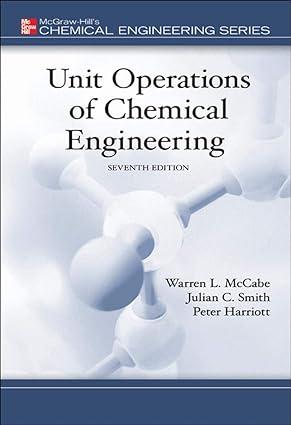A hollow-fiber separator used for reverse osmosis is suspected of having flaws in the 0.1-m dense layer,
Question:
A hollow-fiber separator used for reverse osmosis is suspected of having flaws in the 0.1-μm dense layer, since the salt rejection is only 97 percent when tested with sea-water at 1,000 lbƒ/in.2 abs, and the predicted rejection is 99.5 percent. The measured product flux is 6.5 gal/day-ft2.
(a) If the flaws are 0.01-μm pinholes in the dense layer, how many holes per square centimeter would be needed to account for the lower salt rejection?
(b) What is the corresponding fraction hole area in the dense layer?
(c) What would be the product flux if the pinholes were sealed without increasing the thickness of the membrane?
Fantastic news! We've Found the answer you've been seeking!
Step by Step Answer:
Related Book For 

Unit Operations Of Chemical Engineering
ISBN: 9780072848236
7th Edition
Authors: Warren McCabe, Julian Smith, Peter Harriott
Question Posted:





